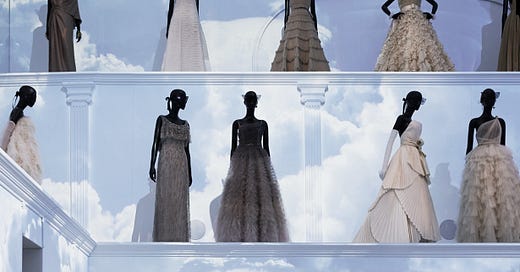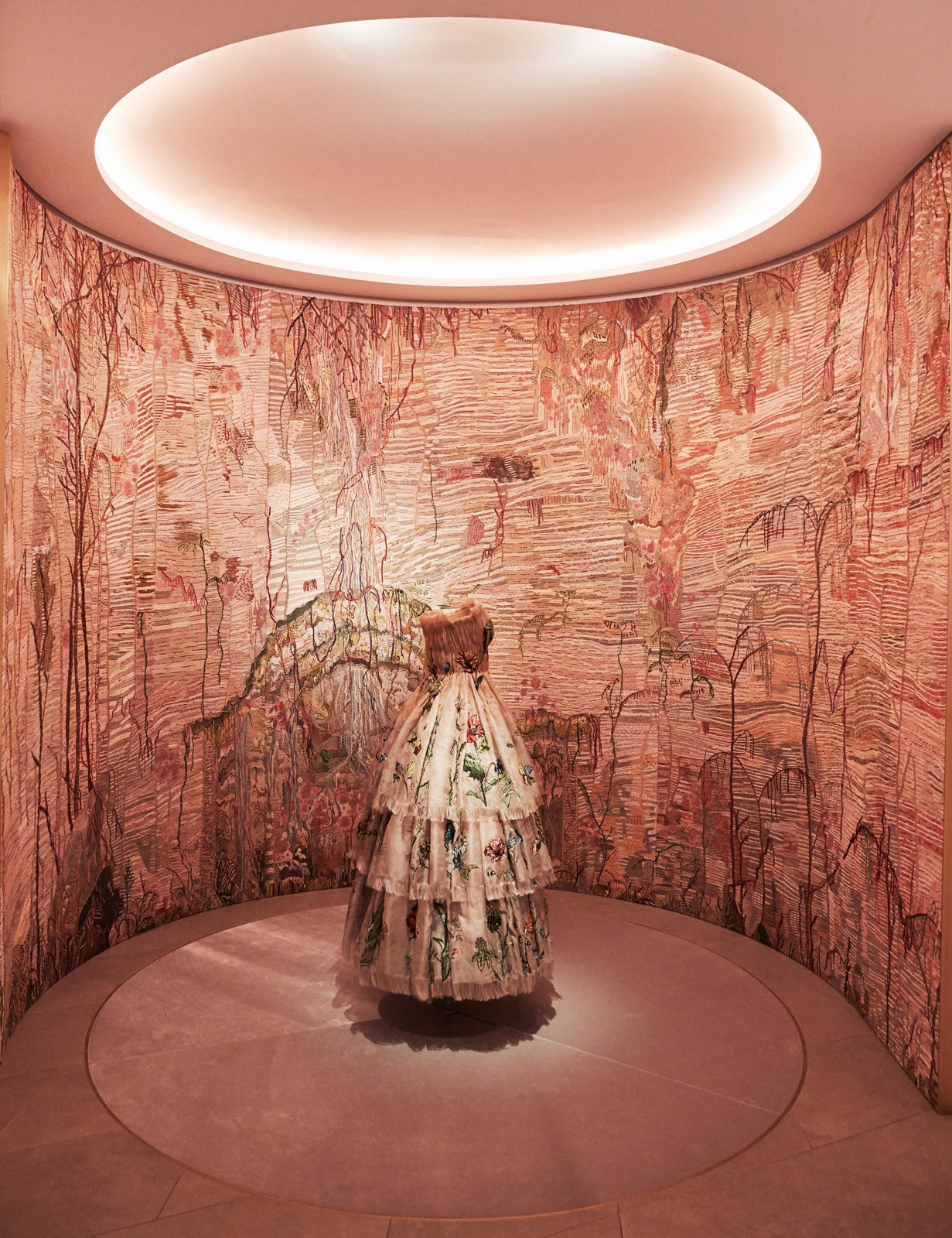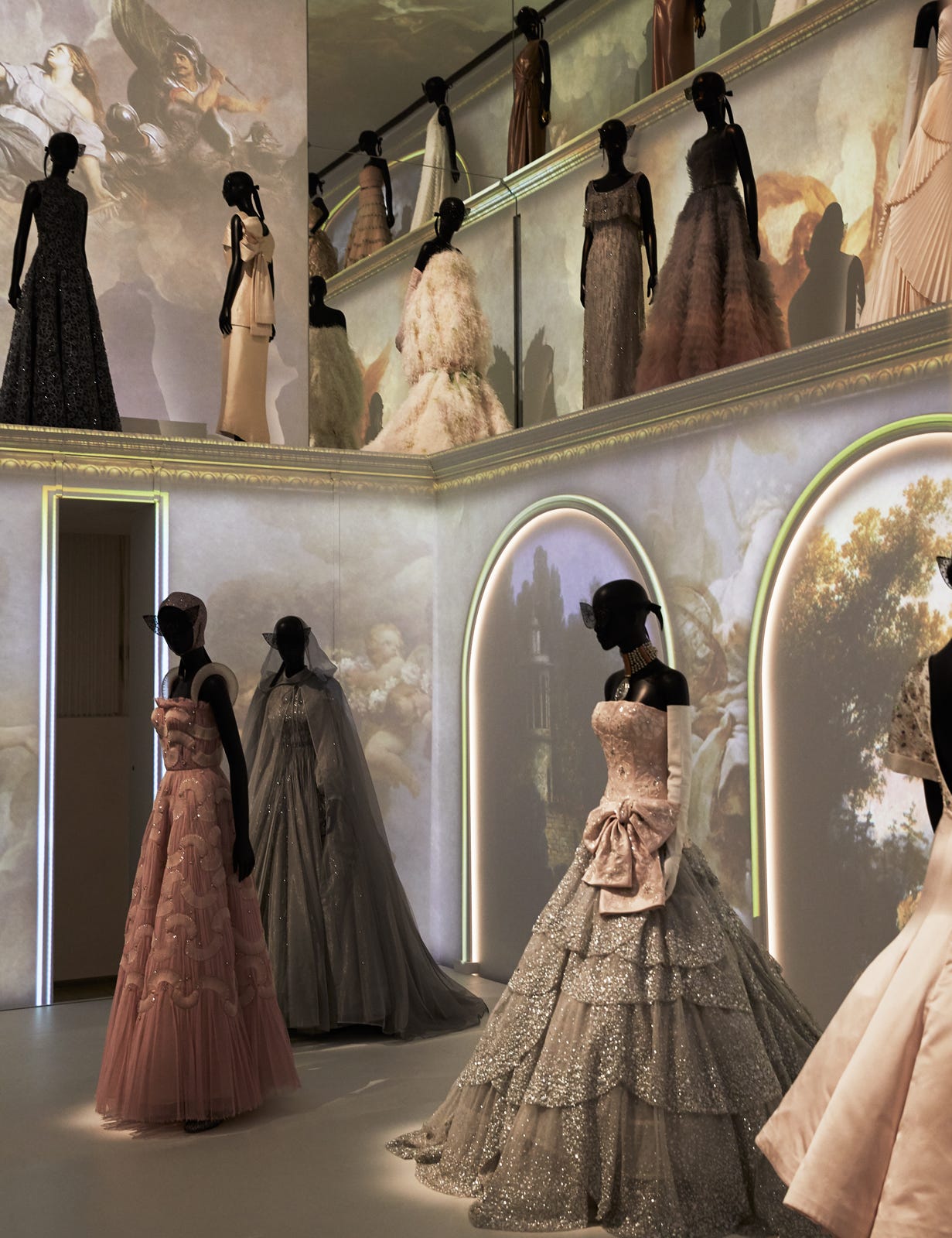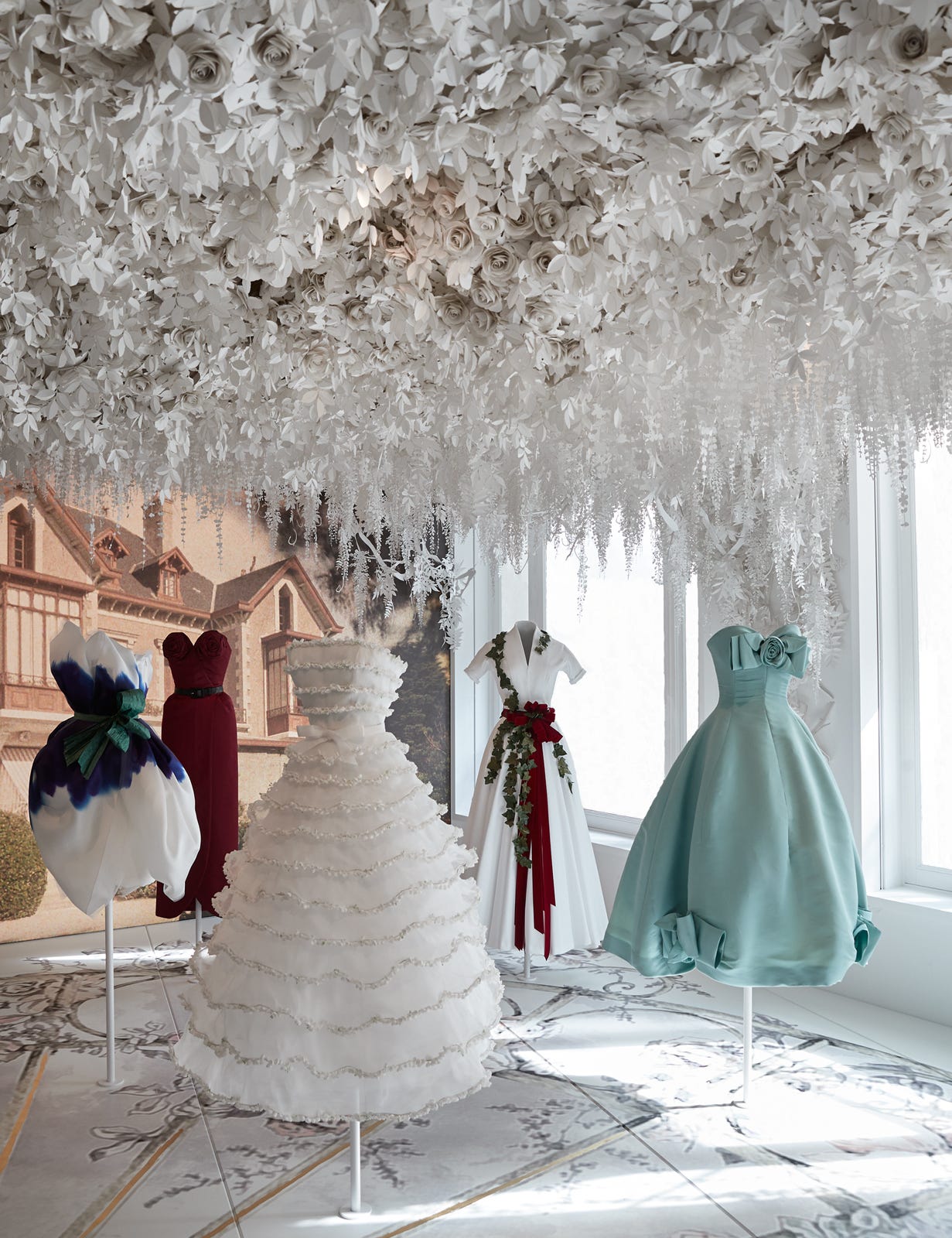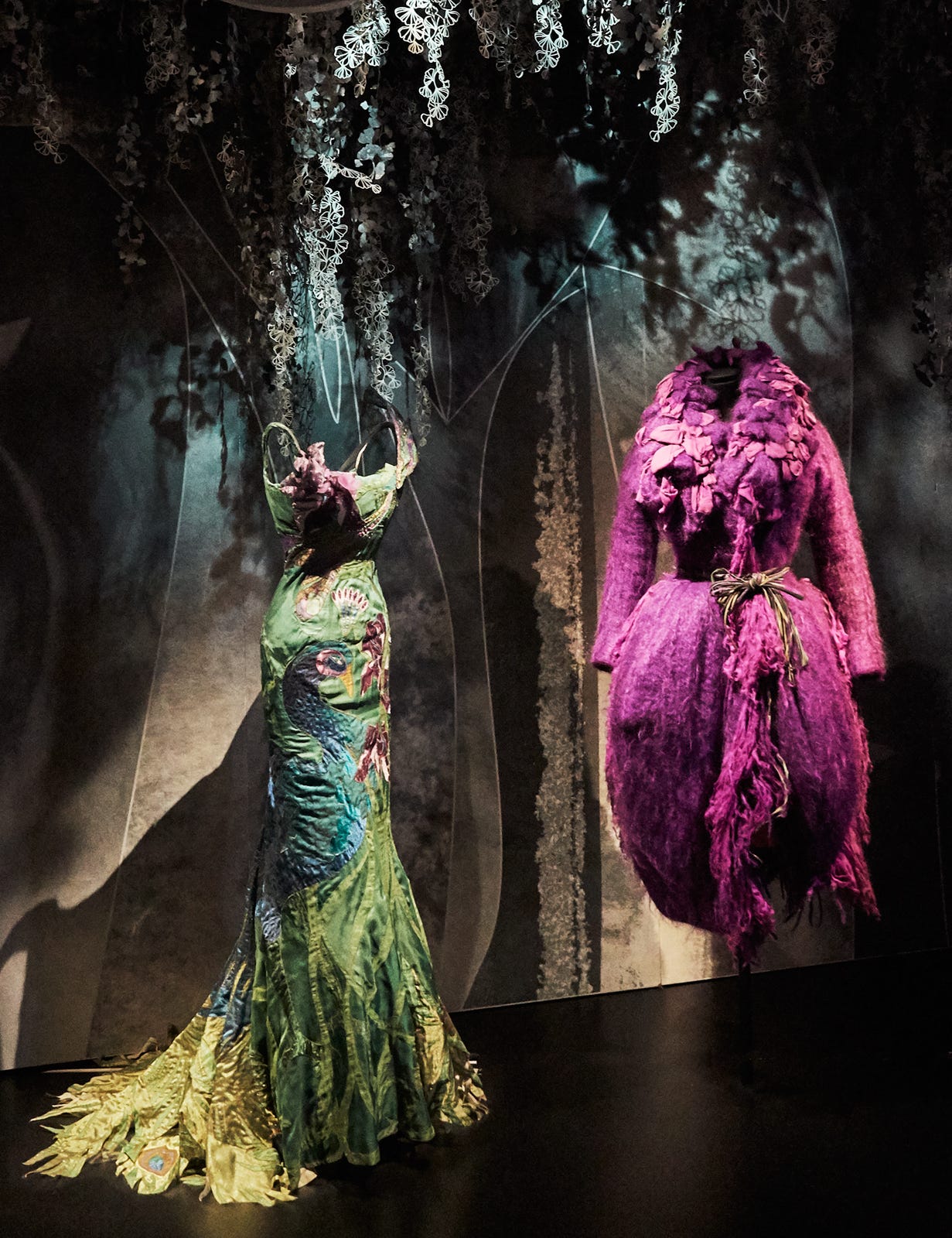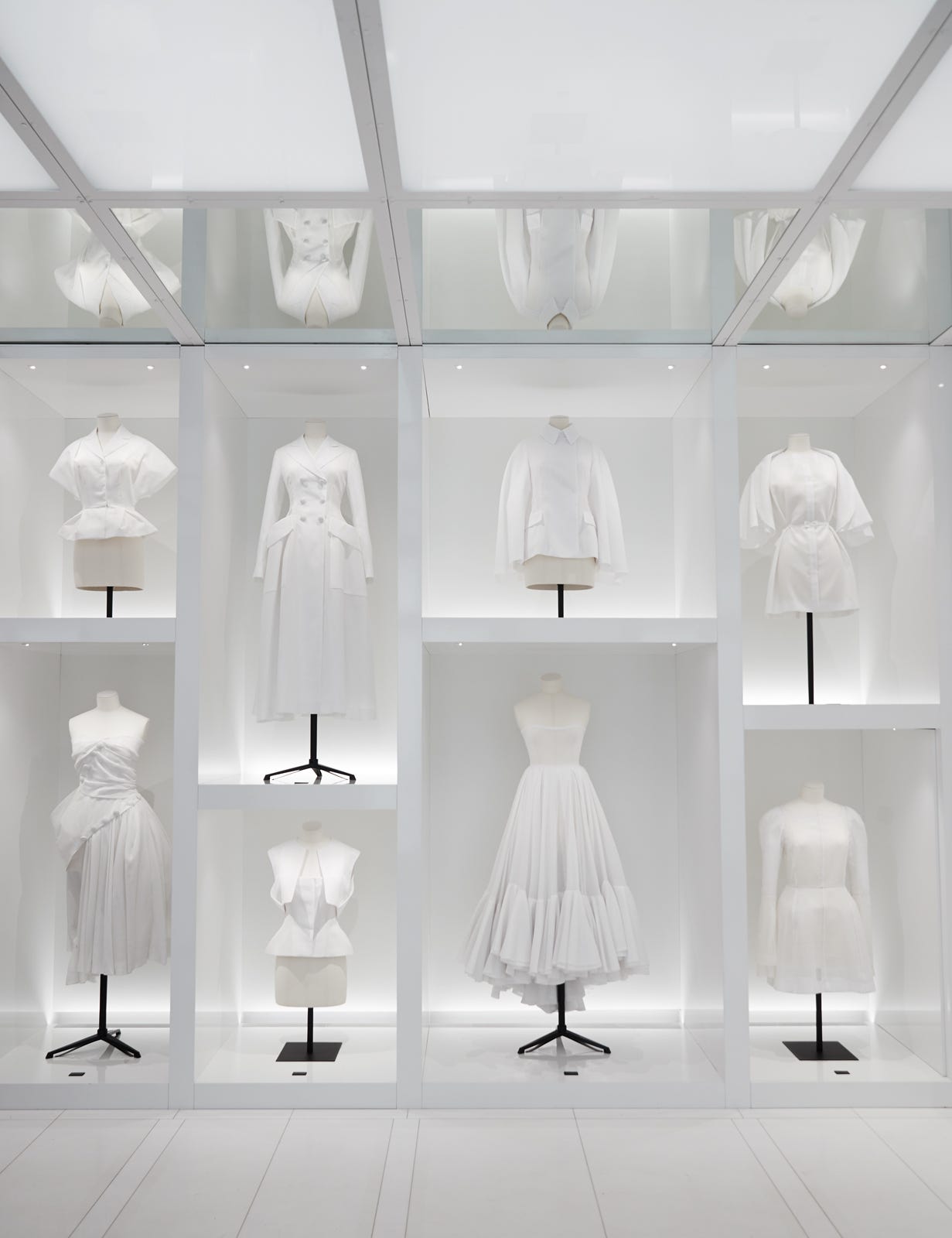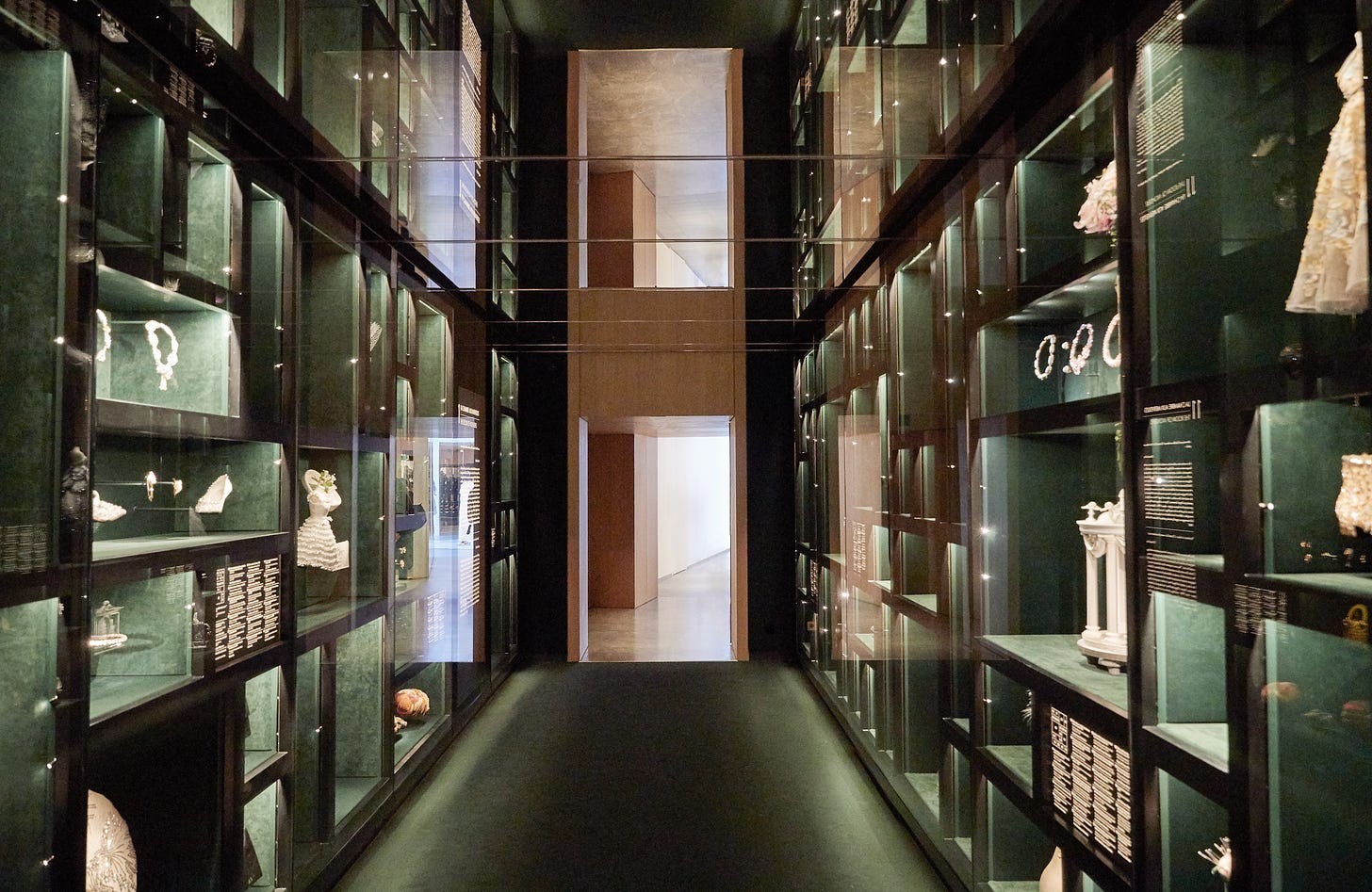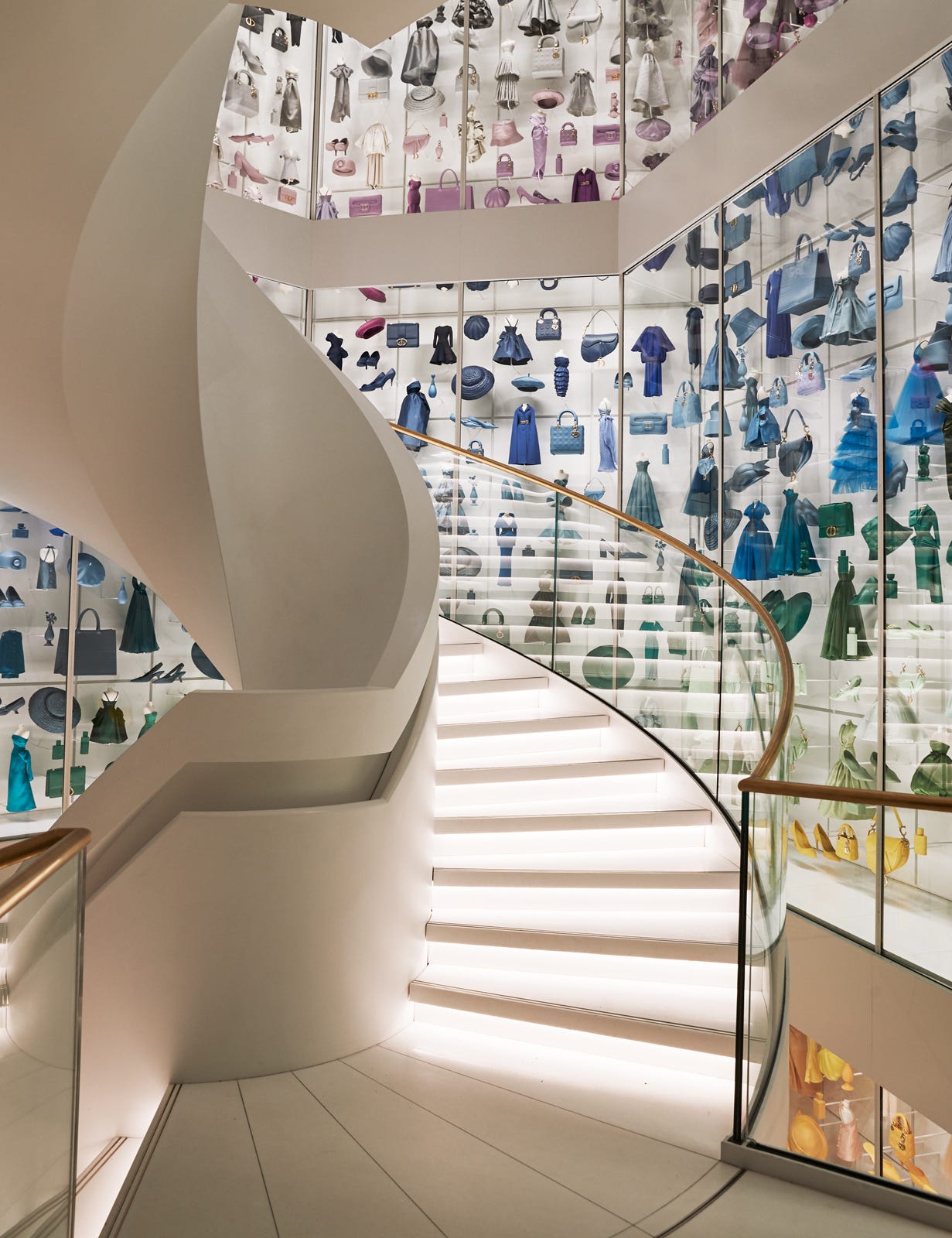Telegram: La Galerie Dior / A Fashion Reverie
The Dior museum in Paris is fashion's version of Alice in Wonderland
Dior’s museum in central Paris tells the story of the French fashion house in a way that is both inspirational and educational. It is also much more ambitious – and larger – than one would expect, so make sure you have plenty of time for your visit.
The advanced curatorial practices in combination with sophisticated technological solutions make it one of the best things to do in Paris.
Dior and Fashion Theory
There is an idea that a creative genius should look the part. Think of Vivienne Westwood in her punk-inspired outfits, or John Galliano as a pirate. Images of a debonair Yves Saint Laurent in Marrakech. And then there are photos of Christian Dior, the complete opposite of a creative maverick. Discrete and unassuming, with the style and appearance of a respectable accountant.
In 2006, following a generous donation, the Centre for Fashion Studies was established at Stockholm University, and two years later, I was hired as a PhD candidate. In 2013, I was the first in the world to be awarded a PhD in fashion studies. The discipline approaches fashion from a purely theoretical perspective, viewing fashion as a kind of symbolic value. The seminal role of the designer in the modern fashion system has been analysed by several scholars, including an entire PhD thesis devoted in part to the construction of the myth surrounding Christian Dior.
Early Years
Born in Granville on the coast of Normandy, he was the son of a wealthy fertiliser manufacturer, and it was expected that he would follow in his father’s footsteps by going into trade or business of some sorts.
When Dior was ten, the family moved to Paris. For those wanting to learn more about his early years, the former family home in Granville has been transformed into a Dior museum.
After finishing school, Dior studied political science and served in the military, but dreamed of another type of life than what had been planned for him.
In 1928, together with Jacques Bonjean, he opened his first art gallery, which he ran, more or less successfully, until 1931. The following two years, he ran another gallery, this time with Pierre Colle. Dior had made many connections in the avant-garde artworld, and showcased artists such as Giacometti, Marcel Duchamp, and Picasso. He was even the first art dealer to display Dalí’s famous paintings of melting clocks.
In 1934, he went bankrupt (and became at the same time ill with tuberculosis), which forced him to close his business. Looking for a new way to make money, he began freelancing as a fashion illustrator. This would eventually lead him into the world of fashion. For me, this has always been one of the most inspiring aspects of the Dior saga; even when things look bleak and money is tight, you never know exactly which doors will open or what the future might hold. A bankruptcy can actually, in hindsight, turn out to be a good thing.
Building the House of Dior
In 1946, he opened his own fashion house, and the year after, he presented his first spring collection, “Carolle”.
Today, the look is often viewed as groundbreaking, even radical, but at the time it was very traditional, with inspiration from both the Belle Époque-style and the fashion of the 1930s. It was the nostalgia of the collection that made it seem daring, as it went against the grain of more forward-looking design promoted by other fashion houses.
Instead, Dior’s garments had a sentimental quality, as the design seemed to find inspiration in a past forever lost. This feeling was emphasized by the vast quantities of material needed to produce the garments, controversial in a time of post-war rations.
For this reason, the iconic editor-in-chief of Harper’s Bazaar, Carmel Snow, said to him, “Your dresses have such a new look!”. Ever since, the house of Dior’s first collection has been known as “the New Look”.
The Golden Years 1947–1957
Christian Dior designed every season for the first ten years, from 1947 to 1957.
These are considered the golden years of the house.
Every season, he would reinvent himself. Today, this design process is known as revolutionary (as opposed to evolutionary), as it seems to revolt against the previous season, making what was yesterday the most fashionable garment appear completely outdated.
Each season was more lauded than the previous one, and still today, Dior is synonymous with the style of the 1950s, in particular the marked waists and flowing skirts.
At the time, most people could obviously not afford Dior’s garments, as the fashion house exclusively produced haute couture, meaning everything was made for hand, made-to-measure, in Dior’s atelier in Paris. For those wanting to know more, a great novel to read is Mrs ‘Arris Goes to Paris by Paul Gallico, which tells the story of a British cleaning lady who dreams of one day owning a Dior dress. For years, she saves, until she finally has enough money to make the journey to Paris and visit the Dior atelier. First published in 1958, the book became immensely popular and was later turned into a film, starring Isabelle Huppert.
The Creative Leaders of Dior
After Christian Dior’s death, the position as creative leader was filled by the already appointed crown prince of the fashion house, a young Yves Saint Laurent. Saint Laurent’s period at the reigns was not long, and after only two years (1958–1960), he was replaced by Marc Bohan, who brought much stability to the house. After nearly 30 years (1960–1989), Gianfranco Ferré took over, and after him (1989–1996), John Galliano (1997–2011).
A brief time, Raf Simons was in charge (2012–2015). Since 2016, Maria Grazia Chiuri is the creative leader.
What is remarkable is how all creative leaders for every season return to the first ten years of the company, finding new and personal ways of updating and interpreting the original styles invented by the company’s founder.
La Galerie Dior
At La Galerie Dior, inaugurated in the spring of 2022, the richness of the vast archives has been made available to visitors. The museum is located around the corner from 30, avenue Montaigne, where Dior’s original atelier was first installed in 1946. Ever since, this Parisian corner has been the heart of the Dior fashion house, and so it makes perfect sense for the museum to be in this very spot. Remember to book your ticket in advance so you don’t have to wait in line outside. The museum is popular, so plan accordingly.
Fashion is not about utility but about imagination and aspirations. To present fashion in the best ways, it’s not only important to show garments, but to create a context that communicates about dreams, telling the story of the brand and the role that the garments have played in the minds of the consumers.
The gallery excels at this, as the presentation is both educational and emotional.
At the centre of the two-story museum is an elegant café, with glasses and plats designed according to the Dior iconography.
Even those not particularly interested in fashion history will be intrigued by the high-technological solutions and clever ways of presenting the remarkable journey of the brand, not least the staircase, around which miniature versions of Dior classics is presented, in different colours.
11 Rue François 1er, Paris
/ Philip Warkander


